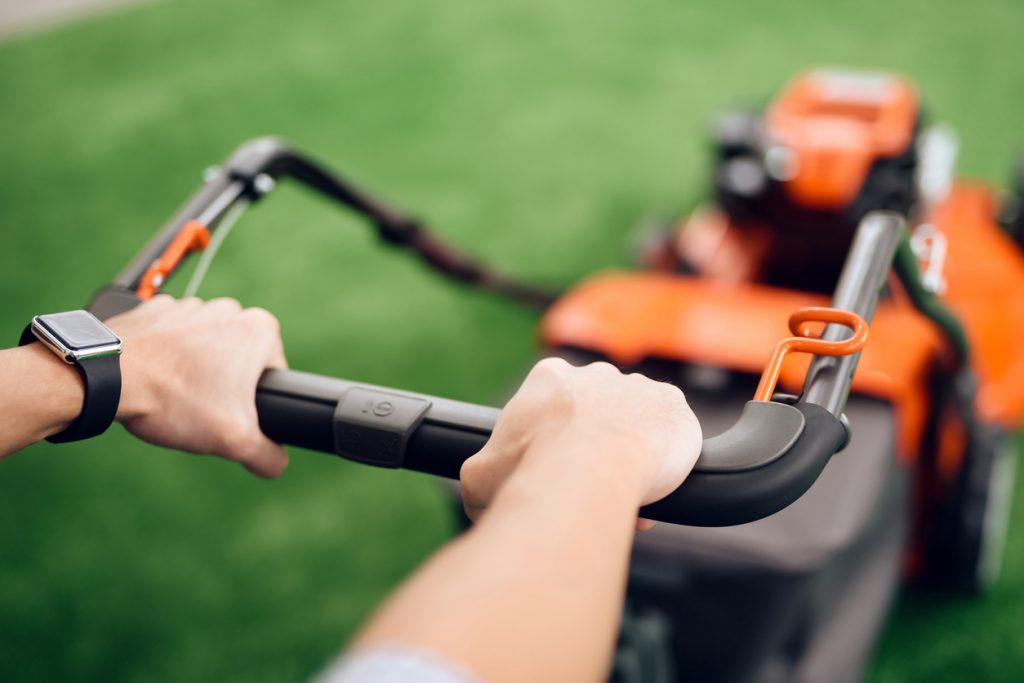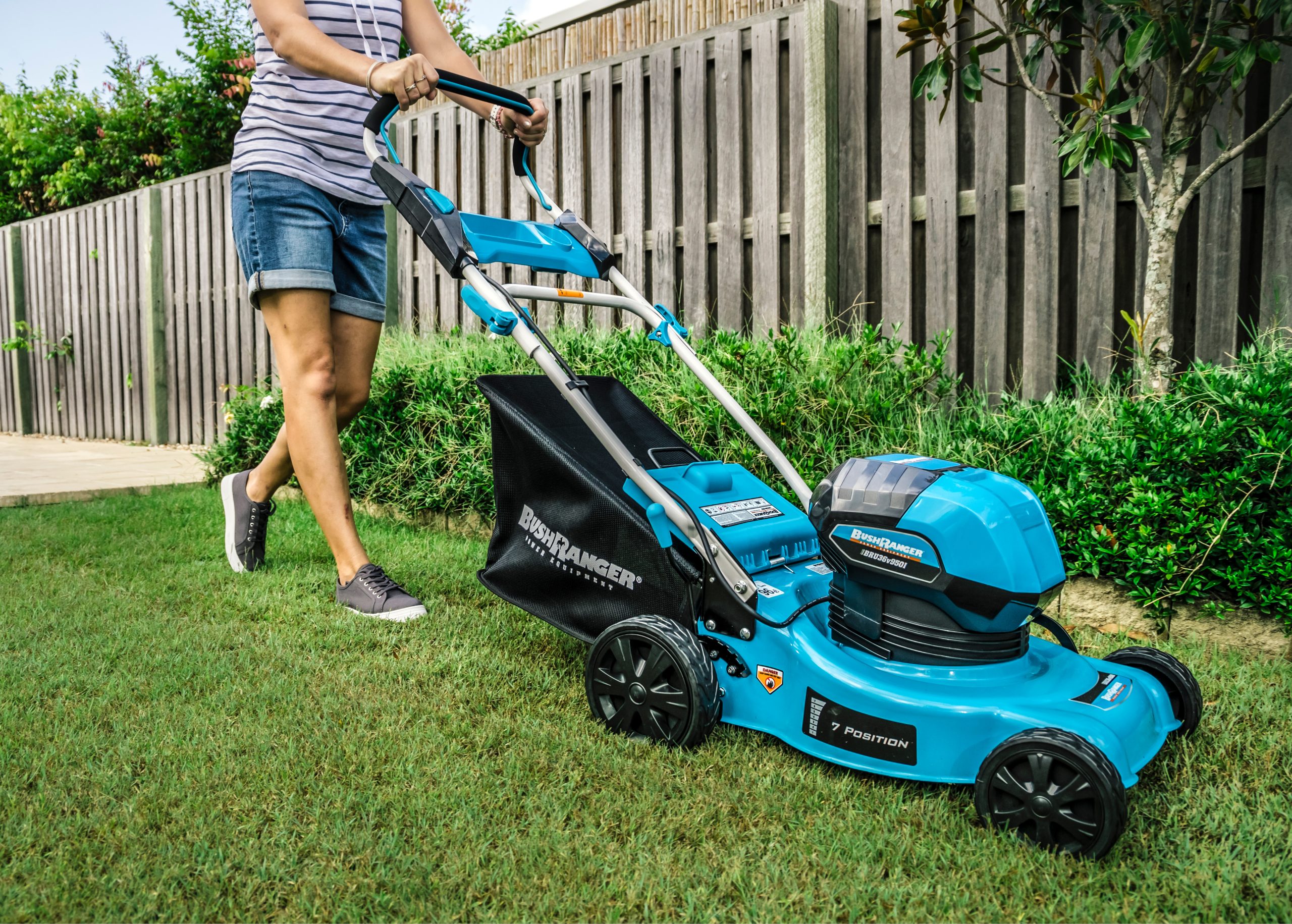Can a Lawn Mower Spread Fungus?
A beautiful green lawn is a natural invitation to relax, play and spend time outdoors. However, ensuring your lawn stays healthy requires effort and a lawn care routine, ...

 Do you love getting out to mow the lawn each week in summer and relish the prospect of working up a sweat while you restore order to your pride and joy?
Do you love getting out to mow the lawn each week in summer and relish the prospect of working up a sweat while you restore order to your pride and joy?
Or are you so tied up with commitments – work, family, travel and socialising – that you struggle to find the time to keep the lawn in check and mowing is something you begrudgingly do only when you absolutely have to?
If you’re the first type of person, you’ll probably be happiest with a Manual Lawn Mower, but if you’re the second type, an Automatic Lawn Mower might be more your style.
Read on for our comparison of these two vastly different types of mowers.
One is hands off, while the other is very hands on, and each has its own unique set of pros and cons.
The best choice will depend on your specific needs, preferences and budget.
 It might surprise you to know the first Robotic Lawn Mower was a solar-powered model launched in 1995 by Husqvarna.
It might surprise you to know the first Robotic Lawn Mower was a solar-powered model launched in 1995 by Husqvarna.
Also known as Automatic Lawn Mowers, they’ve been gaining popularity in recent years and there’s now a range of machines available from numerous manufacturers at different price points.
These machines can be programmed to automatically cut the grass randomly or in a specific pattern at regular intervals.
This means you don’t have to worry about manually mowing the lawn and, once set, the mower will do the work for you.
Automatic Lawn Mowers use sensors to recognise the boundaries of your lawn, avoid obstacles and adjust the cutting height to match how long your grass is.
Once their battery starts getting low, they use radio signals and guide wires to go back to the charging station, returning to work once the battery has been recharged.
There’s more information available in our Guide to Automatic Lawn Mowers.
 Manual Lawn Mowers, also known as motorised push mowers, are the more traditional type of lawn mower that you’ll hear in your neighbourhood most weekends.
Manual Lawn Mowers, also known as motorised push mowers, are the more traditional type of lawn mower that you’ll hear in your neighbourhood most weekends.
You’ll push these mowers, which can be petrol or battery-powered, around the lawn, deciding when and where to cut the grass. You’ll also need to empty the catcher when it fills or rake up the clippings if you don’t use a catcher.
Manual mowers are suited for relatively level yards up to 1000 square metres and are best for lawn lovers who have the physical strength and stamina to guide the mower on its path.
If your lawn area is bigger than 500 square metres, or you get fatigued when mowing, you might prefer a self-propelled mower.
There’s a Guide to Push Mowers here.
For even bigger lawns of more than 1000 square metres, consider investing in a ride-on mower.
There’s a Guide to Ride-on Mowers here and a Guide to Zero Turn Mowers here.
There’s a few things to consider when choosing between an Automatic Lawn Mower and the conventional Manual Mower.
 One of the biggest benefits of Automatic Lawn Mowers is their convenience and efficiency. They are perfect for people who have busy schedules and don’t have time to manually mow the lawn.
One of the biggest benefits of Automatic Lawn Mowers is their convenience and efficiency. They are perfect for people who have busy schedules and don’t have time to manually mow the lawn.
You can program them to mow the lawn at specific times of the day or night – they’re quiet so you won’t disturb sleeping family or neighbours – which means you can have a freshly mowed lawn whenever you want. But all those benefits come at a cost.
Manual lawn mowers, on the other hand, are the more traditional type of lawn mower for good reason.
 As well as being relatively inexpensive, they are durable and maintenance can usually be done yourself at home, making them a cost-effective option for many people, especially if you have a smaller lawn area.
As well as being relatively inexpensive, they are durable and maintenance can usually be done yourself at home, making them a cost-effective option for many people, especially if you have a smaller lawn area.
In conclusion, both Automatic and Manual Lawn Mowers have their own set of pros and cons. Ultimately, the choice between the two will depend on your specific needs, preferences and budget.
If you’re not sure whether an Automatic or Manual Lawn Mower is what you need, take a look at our Lawn Mower Buyers Guide.